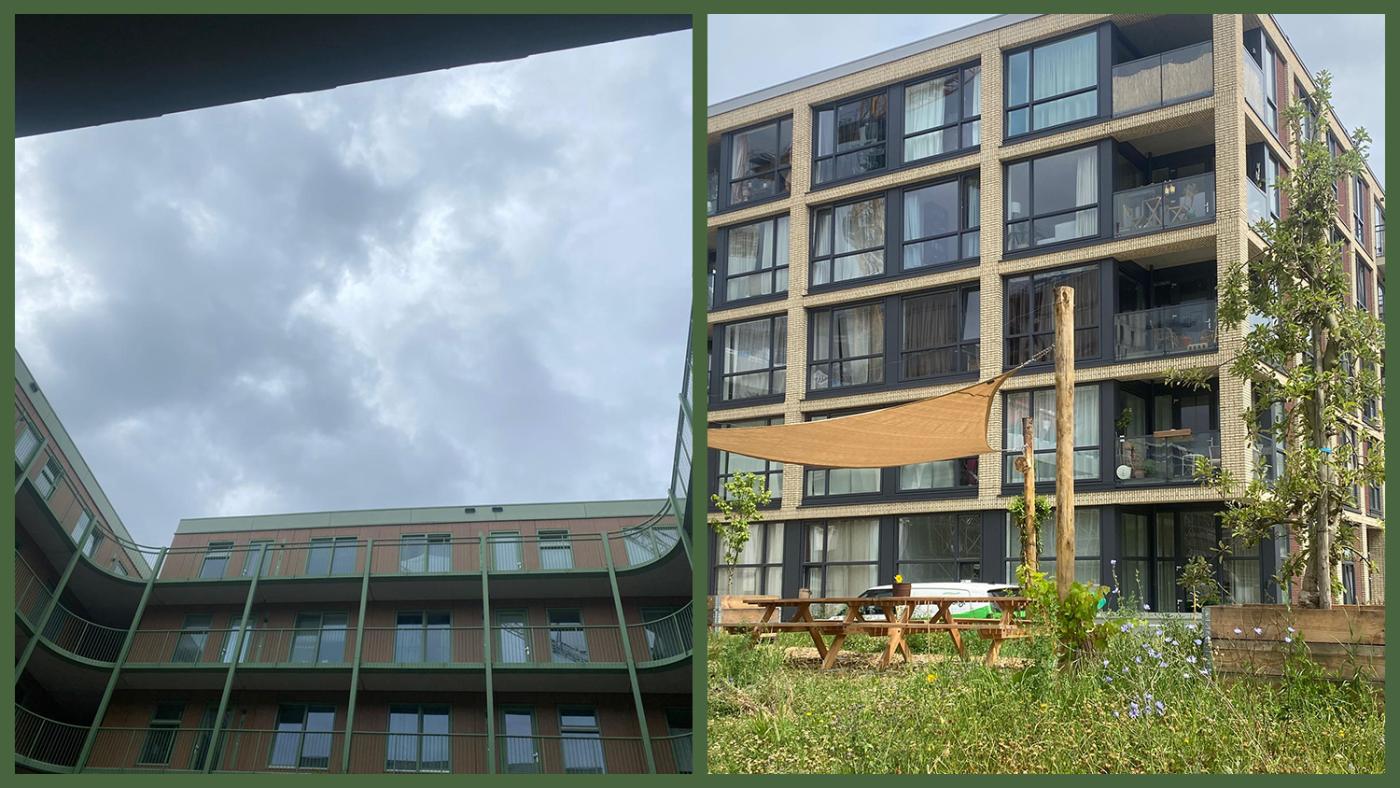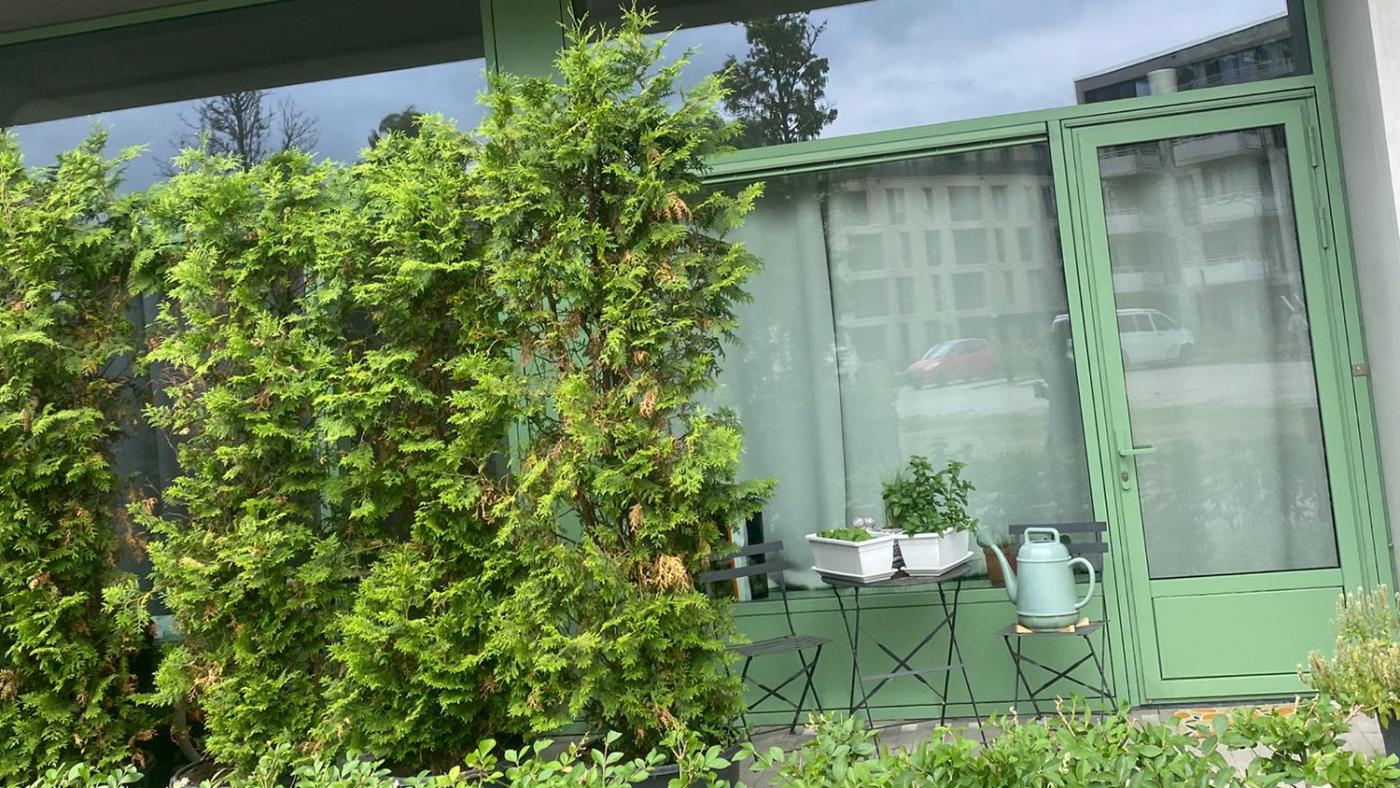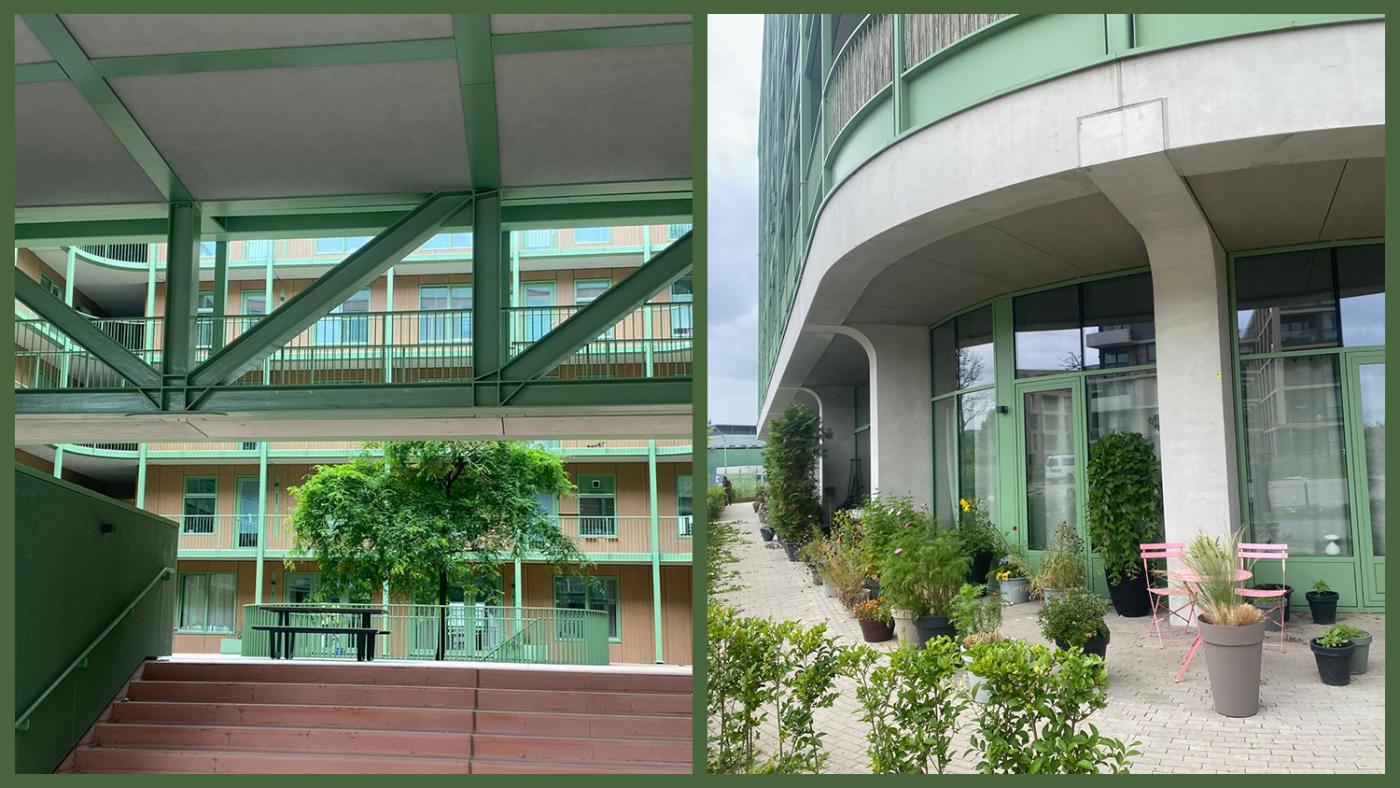A breath of fresh air in Utrecht
Living local: How Cartesius creates the 15-Minute city

What if your neighbourhood could be more than just a place to live? What if it could help you live longer and healthier? Could thoughtful urban design, like banning cars, increasing green spaces, and fostering community, actually transform our well-being and extend our lifespan by five years?
Although these might seem overly hypothetical questions, they are currently being tested in the North-West side of Utrecht. What was once a former railway site in Zuilen is now being transformed into a pioneering district for healthy and sustainable urban living. Previously an industrial site hemmed in by tracks and roads, the area is now the heart of an ambitious pilot project - The Cartesius Triangle - a car-free neighbourhood designed not only to reduce emissions but to reshape how residents live, move, work, and bond.
Our readers wanted to know what individuals can do to save the planet. Researchers try to find out the extent to which a project like the Cartesius Triangle is effective. This innovative project is the flagship of the Data and Knowledge Hub Healthy Urban Living, a unique collaboration between Utrecht University, the municipality of Utrecht, architects, developers, residents, and other academic partners. The goal is to connect nature, space and people by applying the scientific theory of Blue Zones, which are geographic areas designed to promote long and healthy community lives, to the city centre.
According to Utrecht University’s Environmental Epidemiologist professor Roel Vermeulen, a key driving force behind the project, “Cartesius is much more than urban planning, it is a real social testbed”.
Over the coming years, the area is set to include 3,000 houses, a school, a supermarket, restaurants, and a large central park, all designed to foster health, sustainability, and community. Plus, the neighbourhood’s strategic location supports sustainable mobility, with walkable streets, bike paths, reliable public transport, and readily available electric shared cars.

A city designed around health
According to health experts, our genes determine only about 20 per cent of our overall well-being and life expectancy. The remaining 80 per cent? That’s largely up to how we live, to the choices we make every day. In the Cartesius district of Utrecht, that philosophy is built into the very fabric of the neighbourhood.
Here, urban design and lifestyle go hand in hand. From the layout of the streets to the community spaces and green zones, everything is intentionally crafted to support healthier, more fulfilling living. The district is designed to be a place where relaxation, sport, culture, and food naturally intersect, all with equal importance.
For years, urban planners have treated green space as the secret to boosting people’s wellbeing, but greenery alone has proved to be not enough. Take the neighbourhood of Overvecht, for example: although there are plenty of trees and parks, health outcomes are lower compared to other areas of the city. Compared to Tuindorp, there is in fact a gap in life expectancy of about twelve years. Yet, both areas are known for their large amounts of green spaces, so where does the difference lie?
According to Professor Vermeulen, this is exactly what Cartesius Triangle tries to address: it is not just about green spaces, but also about accessibility, air and noise quality, social cohesion, and the daily usability of the neighbourhood. These components are being tested and monitored in the innovative district using scientific tools developed by the Hub, such as the Groene Baten Planner, which maps out the social and economic benefits of greenery, or digital twins that simulate urban design scenarios in real time.

Living Without Cars: A Tradeoff or an Upgrade?
One of the more debated aspects of the Cartesius Triangle is its disincentive on private cars. For some, not owning a car might seem like a big limitation. For others, like resident Luis, it is a welcome relief. “I sold my car before moving here, although the neighbourhood is still in the development process,” he says. “At first it felt radical, but now I enjoy the peace. And, honestly, I do not miss sitting in traffic. Utrecht is such a bike-friendly city, I had almost forgotten that before I came to live here”. And yet, while the area’s mobility programme makes car-free living easy and convenient, it does not exclude car use entirely. Electric shared cars are readily available, offering a flexible and more sustainable option for those who still need access to a vehicle.
The choice of making the neighbourhood car-light is not merely ideological, but supported by data. Traffic-related air and noise pollution are linked to a wide range of chronic diseases. Worldwide, poor air quality is estimated to cause over nine million premature deaths each year. On these grounds, Cartesius aims to insulate residents from such risks through urban layout: buildings are positioned away from railway noise, while a green loop buffers external traffic.
But does removing cars from a neighbourhood really make a measurable difference in health? That is precisely what the hub wants to find out. Through continuous monitoring, researchers can track changes in lifestyle, physical activity, stress levels, and even biometric health indicators of residents.
Back to the future
The Cartesius district is part of a broader urban planning trend toward the so-called fifteen-minute city, where all essential services are accessible within a short walk or bike ride.
Breaking away from the model of mega-neighbourhoods, developed since the 1970s, where people live far from where they work and spend most of their day, Cartesius seeks to rediscover and highlight the value and the importance of local living.
By integrating essential services, healthy food options, green spaces, and opportunities for social connection into the immediate environment, Cartesius encourages more sustainable, active, and community-driven lifestyles. Rooted in a philosophy of shared living, the district is built to foster a sense of belonging, where neighbors aren’t strangers, and public spaces are designed to bring people together. At Cartesius, proximity becomes possibility: the possibility of healthier choices, stronger ties, and a more meaningful everyday life.
Scientists, students, and citizens
What makes Cartesius remarkable is the way it brings together academia, policy, business and everyday people. Students and researchers from Utrecht University are directly involved in the planning and analysis of the neighbourhood. Their studies focus on how spatial design affects mental and physical health, and how those effects can be tracked and enhanced over time.
This real-world engagement is exactly what the Healthy Urban Living Hub strives for, giving rise to a “public-private collaboration” with an open structure that allows citizens to contribute their experiences and concerns. As Vermeulen contended at the early stages of the initiative, “it is not only a project for people, but with them”. In addition to Cartesius, the Hub is overseeing projects in places like Dordrecht and Leusden, each designed to test different strategies for sustainable urban regeneration. These experiments feed into a shared learning system, helping refine methods that can be replicated elsewhere in the Netherlands, and beyond.

From Pilot to Paradigm
Will Cartesius become a blueprint for future cities? Both its developers and academic partners believe so. Architect Armand Paardekooper Overman of Mecanoo has called it a “broad-spectrum solution,” addressing not just housing but also “accessibility, nature, and socio-economic opportunity.”
The long-term vision is clear. For the next 20, even 40 years the project will keep developing, adapting along the way. Of course, it is easier said than done. Integrating so many variables, from climate resilience to mobility and community wellbeing, requires long-term commitment and cross-sector collaboration. But if it works, the payoff is huge: healthier citizens, more resilient cities, and a scalable model for urban transformation.
Walking through the Cartesius Triangle today feels very different than walking through any other city block in Utrecht. “It is not perfect yet,” admits resident Fatima, who moved in from a busier part of Utrecht. “But it feels good to be part of something new, something that might change how cities are built.”
And perhaps that’s the real story of Cartesius: not a utopia, but a working prototype. One where the air is a little cleaner, the pace a little slower, and the future a little brighter.
This is the second article of a series taking a deep dive into climate change and who is responsible for combatting it. DUB readers were invited to choose among three topics they would like to read more about. Most readers wanted to know what individuals can do to save the planet. They wonder how much individuals should be made responsible for climate change, to what extent measures can be imposed, and what role governments or universities play in the fight against climate change.
You can find all the other articles here.